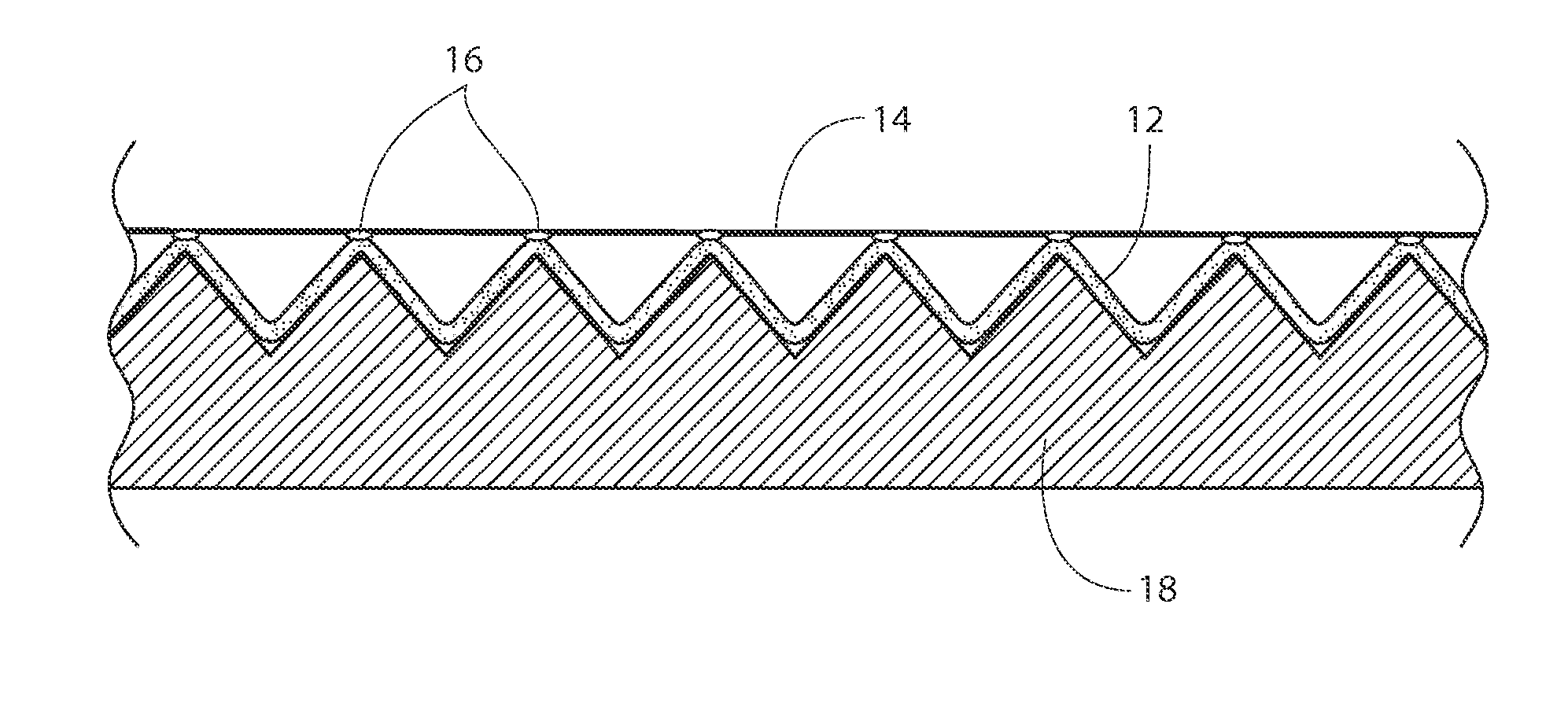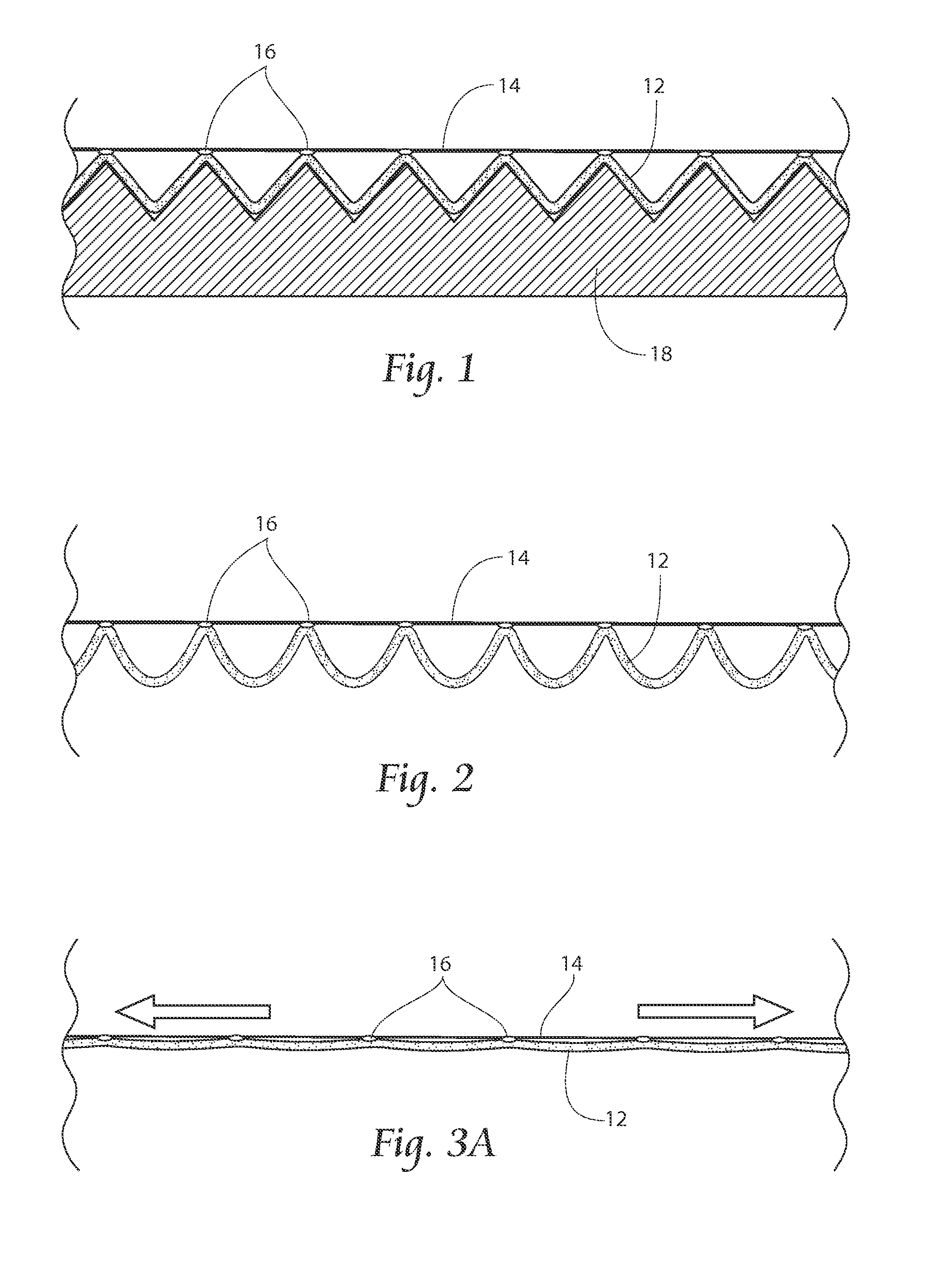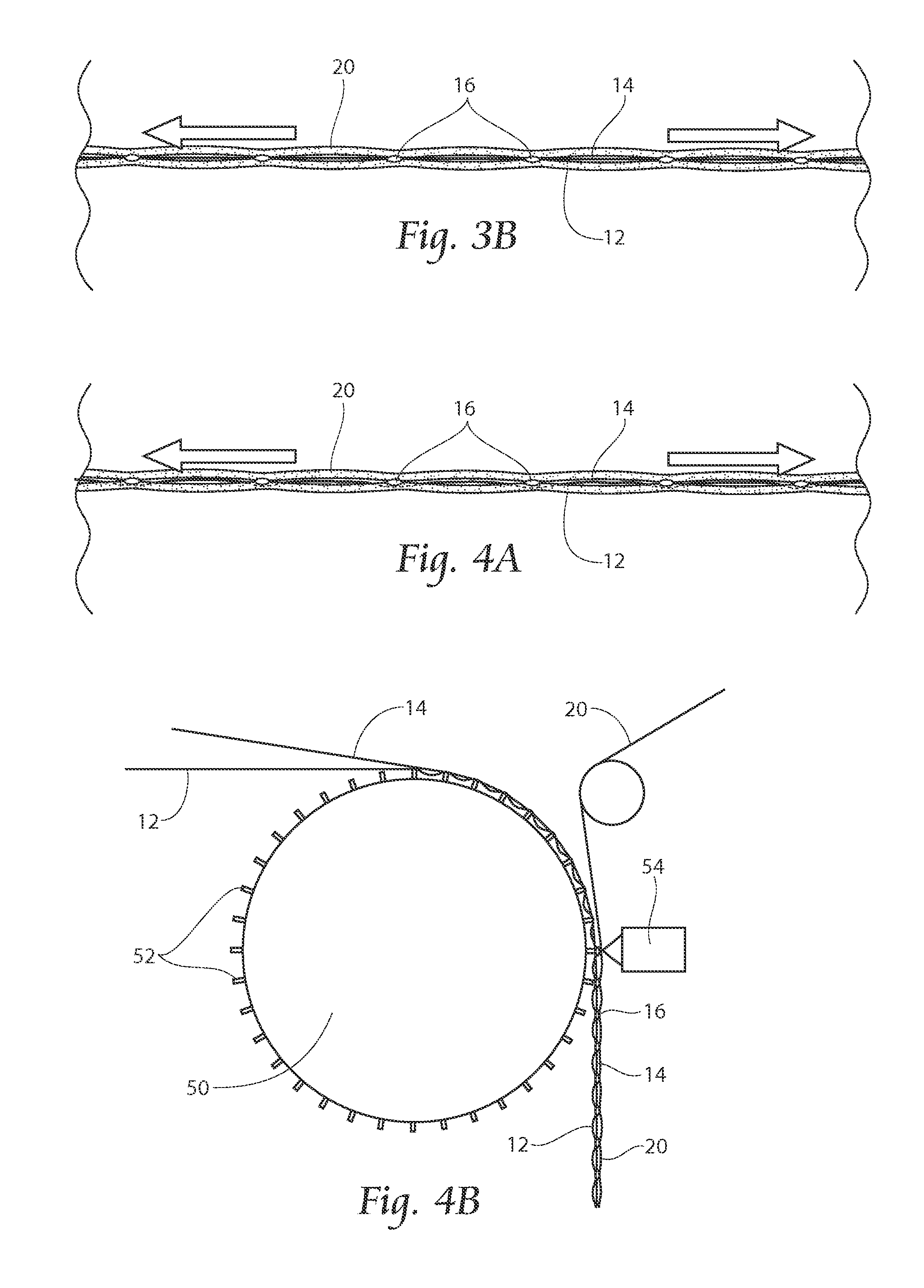Apparatus and methods for securing elastic to a carrier web
a carrier web and elastic technology, applied in the field of apparatus and methods for securing elastic to a carrier web, can solve the problems of wasting material resources, reducing the service life of the product, so as to achieve the effect of reducing the amount of adhesive bonding
- Summary
- Abstract
- Description
- Claims
- Application Information
AI Technical Summary
Benefits of technology
Problems solved by technology
Method used
Image
Examples
Embodiment Construction
[0037]Although the disclosure hereof is detailed and exact to enable those skilled in the art to practice the invention, the physical embodiments herein disclosed merely exemplify the invention which may be embodied in other specific structures. While the preferred embodiment has been described, the details may be changed without departing from the invention.
[0038]It is noted that the present techniques and apparatus are described herein with respect to products such as diapers, but as previously mentioned, can be applied to a wide variety of processes in which discrete components are applied sequentially.
[0039]Referring now to FIG. 1, a side view of an apparatus and method of forming an elastic laminate is shown. A base support structure 18 is provided with peaks and valleys, which can be a “V” shape. A preferably non-woven layer 12 is laid into the valleys. Atop the nonwoven 12 is laid an unstretched or relatively unstretched elastic layer 14, which can comprise strands or a web o...
PUM
| Property | Measurement | Unit |
|---|---|---|
| movement | aaaaa | aaaaa |
| elastic | aaaaa | aaaaa |
| distances | aaaaa | aaaaa |
Abstract
Description
Claims
Application Information
 Login to View More
Login to View More - R&D
- Intellectual Property
- Life Sciences
- Materials
- Tech Scout
- Unparalleled Data Quality
- Higher Quality Content
- 60% Fewer Hallucinations
Browse by: Latest US Patents, China's latest patents, Technical Efficacy Thesaurus, Application Domain, Technology Topic, Popular Technical Reports.
© 2025 PatSnap. All rights reserved.Legal|Privacy policy|Modern Slavery Act Transparency Statement|Sitemap|About US| Contact US: help@patsnap.com



